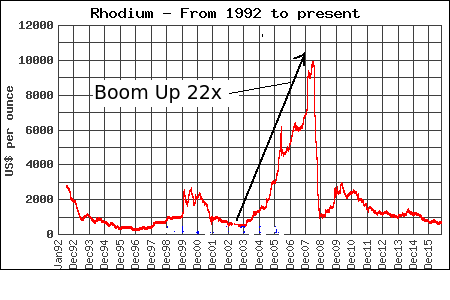Tulip mania refers to a situation when tulips were freshly introduced in Netherlands and people bought the tulip bulbs in large quantities. It had literally become an obsession because of the vivid colors of Tulip flowers which takes seven years to grow them; this led to their increasing popularity among the Dutch. The promoters of tulip flowers exaggerated the flower’s beauty, cultivation beyond imagination and it caused tulip prices to shoot up. They were sold at prices higher than skilled workers’ salaries. After reaching a zenith, tulip prices crashed, leaving tulip holders bankrupt. This incident is recognized as the first major economic bubble.
It was a period in the Dutch Golden Age was (a period in the history of the Netherlands spanning the 17th century, in which Dutch trade, military and art we re recognized among the most acclaimed in the world) during this period contract prices for some tulip bulbs reached extraordinarily high levels. It is mentioned that at a time, the prices shot higher than homes, and then dramatically collapsed. The expanding interest in tulips coincided with an especially prosperous period in the history of the United Provinces, which, by the 17th Century, dominated world trade and had become the richest country in Europe. As a result, not only upper-class citizens but also wealthy merchants and even middle-class artisans and tradesmen suddenly found that they had spare cash to spend on luxuries such as expensive tulip flowers.
re recognized among the most acclaimed in the world) during this period contract prices for some tulip bulbs reached extraordinarily high levels. It is mentioned that at a time, the prices shot higher than homes, and then dramatically collapsed. The expanding interest in tulips coincided with an especially prosperous period in the history of the United Provinces, which, by the 17th Century, dominated world trade and had become the richest country in Europe. As a result, not only upper-class citizens but also wealthy merchants and even middle-class artisans and tradesmen suddenly found that they had spare cash to spend on luxuries such as expensive tulip flowers.
Since then, tulip mania is used as a metaphor to describe an economic bubble. When people start investing in a particular asset in large quantities because of positive sentiments about it, the asset price pushes upward to very high levels. After reaching a peak, prices suffer a sharp fall due to a wide sell off, leaving the asset holders bankrupt. These assets are metaphorically called tulips in economics.
Virtual currency Bitcoin has officially become the largest bubble in history, bigger than the notorious tulip mania. According to analysts Howard Wang and Robert Wu from Convoy Investments, the bitcoin price has gone up over 17 times this year, 64 times over the last three years and superseded that of the Dutch tulip mania’s climb over the same time frame. Their asset bubble chart released a month ago, went viral after they showed that among all of the world’s most famous asset bubbles, only bitcoin is lagging the 17th-century tulip bulb mania. The analysts have updated the chart to show the price of the digital currency has more than doubled in just a month. So, as of now, bitcoin has won the global bubble race, ultimately having surpassed the “Tulips.”
Another example of economic bubble is the South Sea Bubble. It was created by a more complex set of circumstances than the Dutch Tulip mania, but has nonetheless gone down in history as another classic example of a financial bubble. The South Sea Company was formed in 1711, and was promised a monopoly by the British government on all trade with the Spanish colonies of South America. Expecting a repeat of the success of the East India Company which had a flourishing business with India, investors kept buying its shares like maniacs, resulting steep hike in price of the shares of the South Sea Company. And its directors circulated tall tales of unthinkable riches in the South Seas (present-day South America), shares of the company surged more than eight-fold in 1720, from £128 in January to £1050 in June, before collapsing in subsequent months and causing a steep downfall.
Economic bubbles burst suddenly because it is often difficult to observe basic values in real-life markets, bubbles are often conclusively identified only in retrospect after a sudden drop in price occurred. Such a drop is known as a crash or a bubble burst. Both the boom and the burst phases of the bubble are examples of a positive feed back mechanism. Prices in an economic bubble can fluctuate erratically, and become impossible to predict from supply as well as demand point of view.
The Dot-Com Bubble is an example of the 1990s. This bubble became bigger because of NASDAQ. The introductions of the Internet generated a massive wave of speculation in new economy businesses, and as a result, hundreds of dot-com companies got floated. They got multi-billion dollar valuations as soon as they went public. The NASDAQ Composite which became home to most of these technology / dot-com companies, soared from a level of under 500 at the beginning of 1990 to a peak of over 5,000 in March 2000. The index crashed shortly subsequently, dipping nearly 80% by October 2002 and left triggering recession in US. The Composite eventually reached a new high only in 2015, more than 15 years after its previous peak.
Similarly the Rhodium Bubble of 2008 saw prices of the rare chemical element increase from $500 per ounce in late 2006 to $9,500 per ounce in July 2008, before falling even more rapidly back to $1,000/oz in January 2009. Nobody is quite sure what sparked the buying rage, but it seems to have been a combination of demand in the American car industry, a bullish market in rare metals and at least one rogue speculator on Wall Street leading on the herd of investors. Likewise, the Uranium Bubble happened in 1970s. Uranium hit spot prices of around $110 a pound, but dropped down to below $20 pound in the 1990s, and this is where it stayed until 2005. A perception of future nuclear energy demand from emerging economies, reactor lifetime extensions in the West and low inventories of uranium led to a swift increase in prices from 2005 to 2007, causing a huge point in stock prices for uranium mining and exploration companies.
Conclusion: Typically during a phase of bubble, investors get hooked by a new idea or circumstance, a new innovation, new technology. Bubbles are also discomforting for the economics professionals. Buyer get swayed with the stories attached to asset, there are no guaranteed formulas to explain what causes bubbles to form, it’s just that buyers get very greedy of making profits. Some explanations can be psychological. Few thinkers point out that many bubbles have been stirred up not by stock markets but by governments. And, strangely some analysts think that some famous bubbles were not bubbles at all. People get carried away. They hear stories from their neighbours, friends, some relative getting rich and they invest in the stock at whatever price it may cost them. Greed has no limits and this is the reasons for creation of economic bubbles. A symptom of this herd mentality is called ‘’ me too’’ psychology; it’s very typical when investor displays his/her greed with bad timing.















































